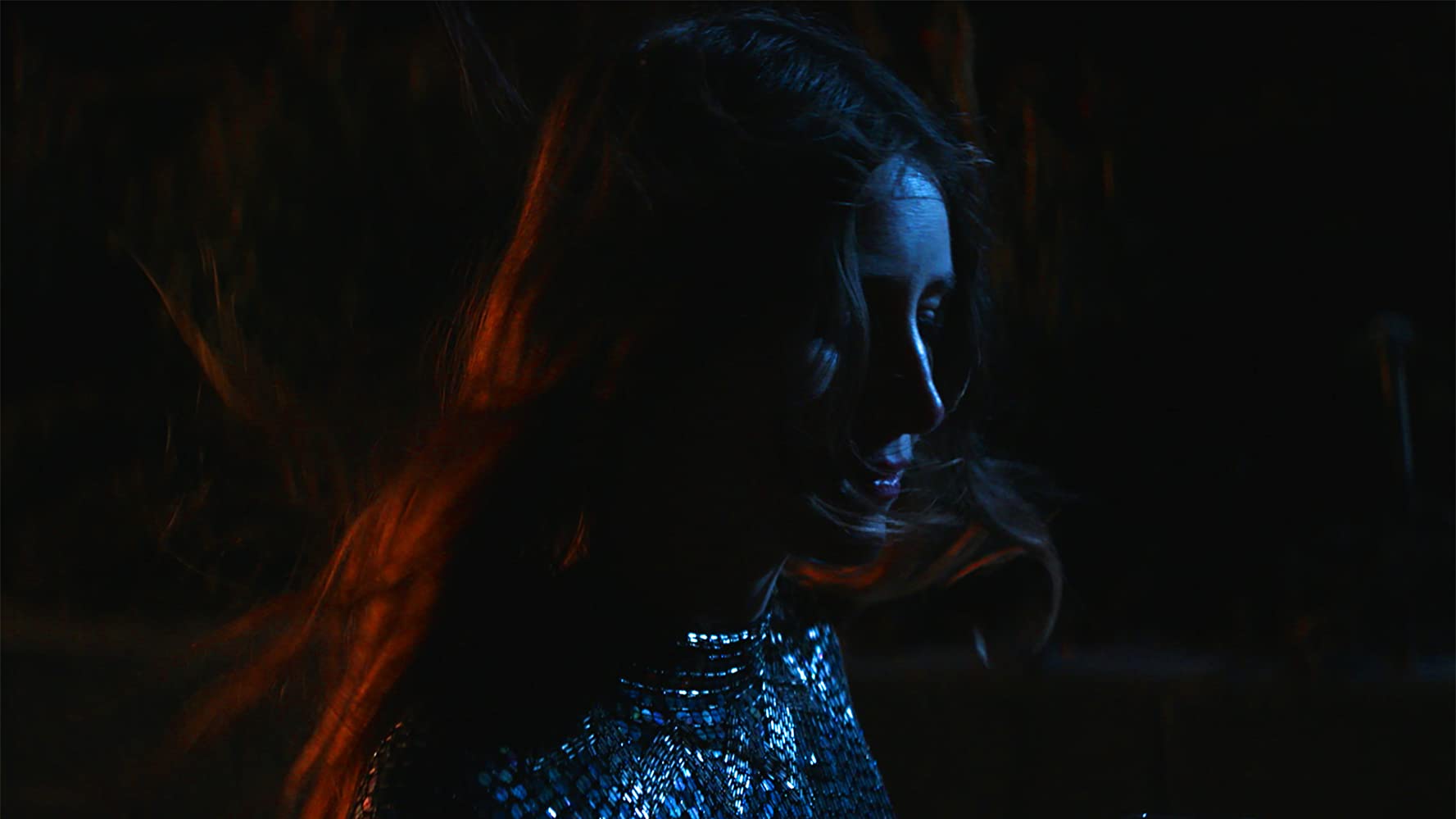There’s going to be a lot of talk about how eerily prescient She Dies Tomorrow is, given that it was shot before the pandemic and features a virus that makes people confront their mortality. But the film’s contagion is at an important remove from its real-life analogue. Unlike the coronavirus, there are no steps between contracting the disease and staring death in the eyes: the only symptom of She Dies Tomorrow’s virus is the unconditional belief that one is going to die the next day. If the film feels ready-made for this specific moment, it has less to do with COVID itself and more to do with the imperative of indefinite isolation. She Dies Tomorrow is about a singular despair—one Kierkegaard might’ve described as “quarantining the self from itself”.
From the onset, the film settles into a groove of not making its purposes clear. That doesn’t mean it’s incomprehensible—it’s not opaque so much as it’s crystalline, inviting your gaze but warping everything you see through it. It’s never quite right. We understand that Amy, our protagonist who shares her name with writer/director Amy Seimetz, is having a breakdown in a house that she just barely moved into. We understand that Amy’s friend Jane, portrayed by Amy Seimetz’ friend Jane Adams, is worried about her safety. We understand that there’s probably a hint of autobiography at play. But beyond that: why is Amy listening to Mozart’s Requiem over and over and over? Why is she drifting outside and clenching piles of soil in her fists? Why is she caressing the floorboards?
These might seem like your average breakdown antics, but Seimetz employs some formalist tricks to double down on the strangeness. Shots don’t transition; they collide. Scenes burst open with no visual or audial regard for what came before, jumping jarringly to new imagery and cutting off music like the pulling of a plug. Sight and sound work asynchronously, slow motion is used confoundingly, primary colors blare inexplicably and with a ferocity deserving of a seizure warning. Amid this stylistic spasm, oddities that were once dormant are underscored by the surrounding atmosphere: the vacuity of Amy’s near-empty house. Subliminal flashes of past (or future?) events. The expressions on Amy’s face, before depressed and conflicted, now seeming… acquiescent? Orgasmic? The wrongness of it all becomes pervasive. Seimetz’ direction puts us inside a heart that’s rending itself apart.
And this is all before the film’s main conceit is introduced. Right when you think you have a handle on the vivid surrealism of this woman’s grief, she reveals to her friend Jane that she’s absolutely sure she’ll die tomorrow, which Jane initially scoffs at. But later that night, Jane becomes confident in the exact same notion, so she seeks refuge at her sister-in-law’s birthday party—only to spread the idea to four more people. Their respective realizations that their lives will end tomorrow are accompanied by the same stylistic spirals seen with Amy: throbbing colors, sound distortions, close-ups on their broken faces. You’d think this would be a dour affair, but instead it’s immersed in gallows humor. With less than a day to process their deaths, the characters experience all the stages of grief simultaneously, leveraging their acceptance of the inevitable against their anguish. It’s the tonal equivalent of a nervous laugh.
That singular wrongness creeps in more and more as the virus spreads. This impossible infection, this humor in the midst of bottomless pain—they feel as wrong as death does to life. It’s alien, but familiar, because we’ve explained it away before. Maybe these people deserved it? Maybe they don’t have to worry, because there’s something after this life ends? Maybe, because She Dies Tomorrow has shortened the timetable considerably, there’s no use in such postulation; Seimetz has trapped us in a formal prison and there’s no room to explore the possibilities. All that’s left is the peculiar knowledge that something’s off, that it cannot be fixed, and that we’ve been isolated from our futures—and thus from a potentially fuller version of our selves—because of it. As a purveyor of this mood, She Dies Tomorrow is resoundingly successful. We catch its illness.
Narratively, though, the film starts spinning its wheels once the first round of infections has occurred. There should be no expectation for an explanation—at this point, it’s obvious that the fever dream has no underlying logic—but there is an unmet expectation that the mood piece will diversify or deepen. The middle stretch of She Dies Tomorrow is an exercise in tonal equivocation: it finds new ways to foster the same feelings, but they don’t add depth to our dealings with detachment and death. Experiments that felt daring at first are repeated to diminishing returns. It’s not until a scene near the denouement that She Dies Tomorrow dips its toes back into the pool of profundity. Seimetz crafts some astounding images that convey the power of aligning our selves with the reality of our situation, with an acute focus on how women are more acquainted with the specters of fear, death, and distance from oneself. It’s in this scene that the film succeeds at both generalizing existential dread and narrowing it back down to something we can see in the people around us.
The scene on which the film ends, however, falls back into its earlier holding pattern. In both a positive and a negative sense, She Dies Tomorrow would be just as effective if its scenes were out of order: it’s a swirl of doom and gloom, horrifying in its implications but calming in its temporary beauty, perhaps only to be understood when life is flashing before your eyes.
★★★½ (3.5/5)




